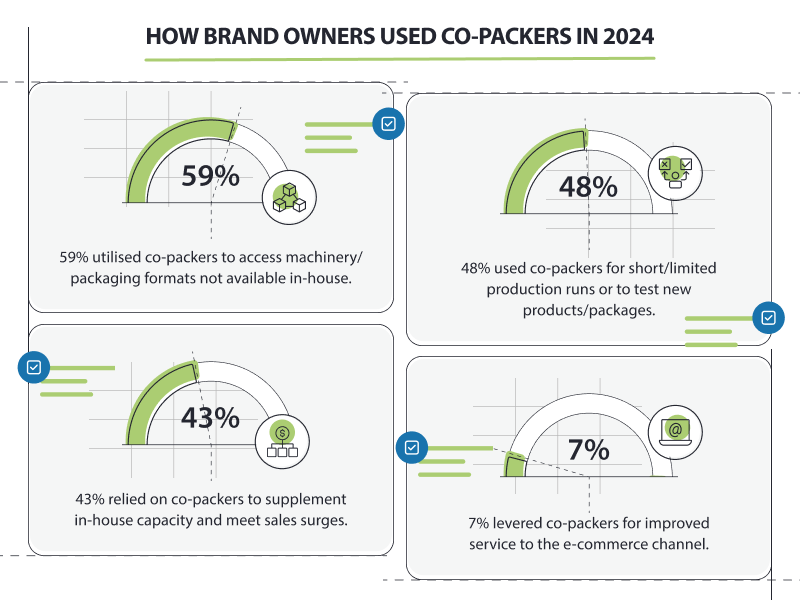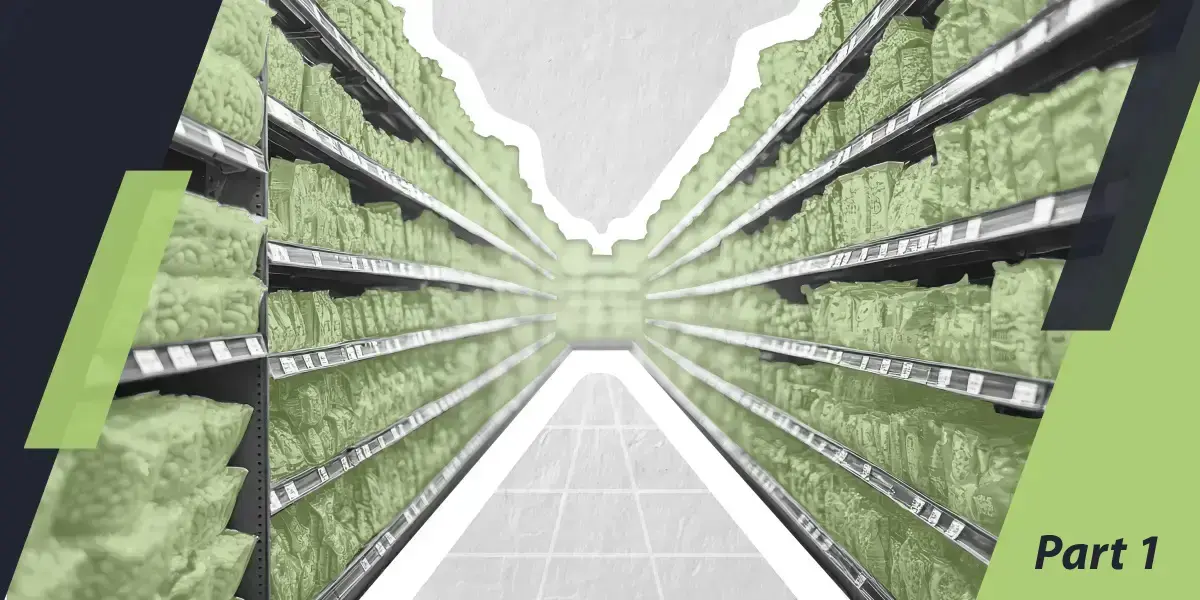Packaging has always been associated with branding. Think of the classic curves of the Coca-Cola bottle, the sleek boxing of an iPhone, or the wholesome feel of the eco-packaging used by Lush cosmetics. But if brands can differentiate themselves by packaging, how can co-packers stand out in their own highly competitive, quickly evolving marketplace?
The co-packing space has changed
Co-packing companies have evolved beyond the simple packaging service providers of thirty years ago.
Today's contract packers must offer tailored solutions for companies facing an onslaught of competitive challenges. They must offer a range of filling, pouching, packaging, design and dispatching services to keep their clients ahead of the curve in innovation and sustainability.
Packaging drives customer experience as never before
As McKinsey's report on the future of packaging shows us, FMCG clients and co-packers are responding to new levels of customer demand.
"Consumer preferences are shifting towards personalised, convenient, healthier, and affordable products that will require creative ways to increase manufacturing flexibility to deal with SKU proliferation."
— Daniel Nordigården, Senior Expert at McKinsey
Co-packers need to rise to the challenge
But co-packers who aren’t rising to these challenges through continual innovation, risk losing it all:
"Simply doing what everyone else has been doing is no longer going to cut it. Packaging companies need to embark on a change journey with controlled urgency: they should increase their strategic focus on innovation and agility in order to preserve value and capture growth."— David Feber, Partner at McKinsey
What do clients want from packaging partners?
Globally, the industry is booming. And OEMs are demanding more input and expertise from their outsourced partners.

Source: PMMI (Packaging Machinery Manufacturers Institute)
Optimism and opportunity in the co-packing space
And the good news is the co-packing market is continuing to grow:

Source: PMMI (Packaging Machinery Manufacturers Institute)
Key drivers for growing uptake of co-packing services
There are many pressures on clientss driving their search for co-packers:
- Sustainability demands – Brands are under pressure from consumers to deliver more recyclable, compostable, and reusable packaging. Co-packers with cutting-edge and eco-friendly solutions are becoming vital strategic partners for many businesses.
- Reshoring and nearshoring – Political, ecological, and logistical pressures are driving clients to move packaging operations closer to home, creating big opportunities for regional co-packers.
- Tighter regulations – Stricter laws like the UK’s EPR legislation and Plastic Packaging Tax (PPT) are forcing brands to rethink packaging. Clients must now take full responsibility for waste and pollution in their supply chains. Co-packers with compliance expertise are in high demand.
- Speed & personalisation – Today’s brands need customised, fast-turnaround packaging to keep up with shifting consumer trends and skyrocketing SKU counts. Agile co-packers are stepping in to fill the gap.
- E-Commerce boom – With more brands shipping direct to consumers, durability, sustainability, and unboxing experience are top priorities - co-packers with e-commerce expertise are thriving.
- Tech-driven packaging – Smart packaging, RFID, QR codes, and connected supply chains are transforming the industry. Co-packers who integrate these technologies are ahead of the game.
- Material Innovation and light-weighting – Brands are redesigning packaging to be lighter, more efficient, and sustainable. Co-packers investing in material science are gaining a competitive edge.
-
Subscription and on-demand models – The rise of meal kits, subscription boxes, and personalised products is driving demand for flexible, scalable co-packing solutions.
What do clients really want from co-packers?
With a surge in interest in outsourcing, OEMs are looking for innovation, insight, and advice to tackle the particular challenges and opportunities rising in their verticals. But analysts say while capabilities are growing, co-packers can struggle to proactively win business from their prospects:
"We’re seeing a lot of packaging companies that are waiting for their customers to come and ask for something different. The challenge with that is, often, when these customers ask for something different, they’re going to a new converter."
— David Feber, Partner at McKinsey
Demand generation is a new priority
There has been a surge in M&A driving the growth of competitor capabilities. Both contract manufacturers and converters are now looking to steal business from traditional co-packing companies.
Innovation is vital but price considerations are often driving customers into the arms of competitors. With hyper-scale and niche competitors threatening businesses, McKinsey suggest co-packers must use their unique insights to start generating demand.
"Success going forward will not only be about how to make the most of a company’s current strengths and relationships to secure growth and profits, but also about developing an outlook on where the pockets of growth are located – even if currently unserved."
— David Feber, Partner at McKinsey
How are clients buying now?
Depending on old loyalties and buying patterns to drive business is no longer enough. Focusing on short-term sales activity to fill production lines will not answer a long-term need for more sustainable pipelines and bigger opportunities.
For co-packers there is a new reality to deal with. Customers are now researching new options online. They are actively searching for new solutions to tough, modern challenges.
69% of B2B buyers find gathering information online on their own preferable to interacting with a sales rep during the discovery process
Source: B2B Executive Seller Survey
Not only this, but they are seeing new options popping up in their social feeds.
They are witnessing the benefits of collaboration with different packaging partners within their peer networks.
Where are you now?
In this world of digital engagement funded by more agile competitors and hyperscale brands, traditional co-packers may be missing out.
Just look around at websites in the industry and you’ll typically see under-investment around online presence and branding. Budget is clearly being spent on digital transformation of equipment and facilities rather than branding and digital marketing real estate.

Source: PMMI (Packaging Machinery Manufacturers Institute)
But this may be an expensive mistake.
You need both.
Co-packers should focus on their digital brand to make themselves visible and meaningful to customers who are searching for a new kind of support and inspiration.
In part two, we explore just why co-packers should get obsessed with their branding, and how it can help them navigate this new reality.



